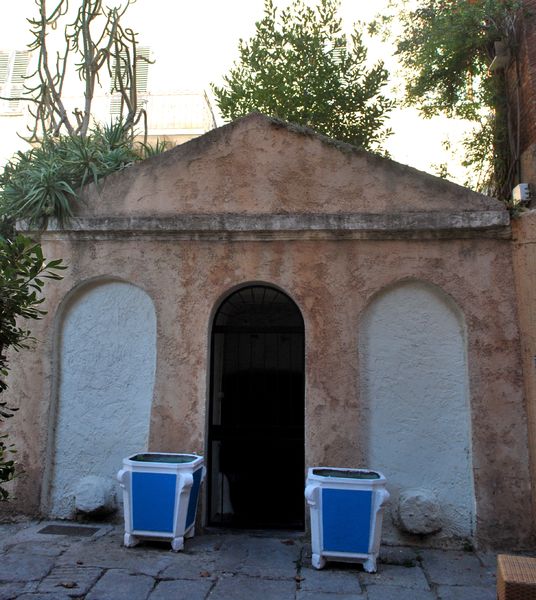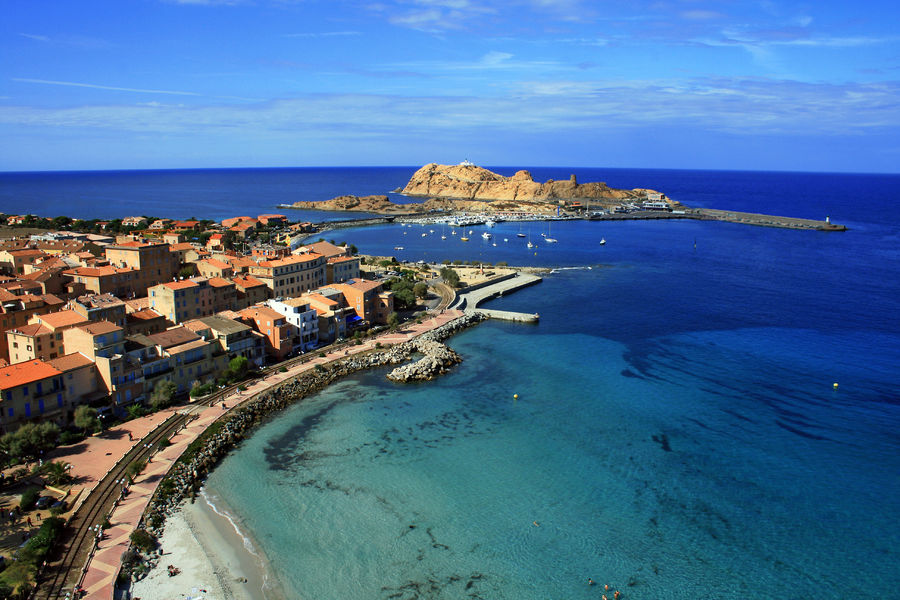

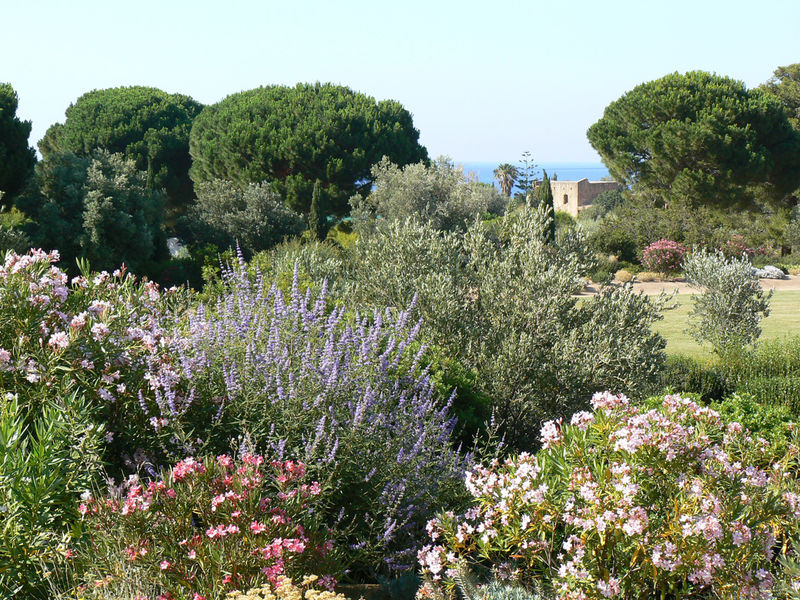
Discover Corsican and Mediterranean vegetation staged by a landscape gardener. A unique 7-hectare nature walk. A true moment of relaxation, discovery and sharing, with friends or family. Various activities and events.On the seafront, at the gateway to L'Ile-Rousse, come and visit an exceptional 7-hectare landscaped site.
Through its botanical circuit, you'll discover the "Art of gardening in the heart of the Corsican maquis". The quintessence of a land is expressed here. Corsica can be explored, smelled and admired through all the plants of its maquis and the vestiges of an ancient agricultural activity.
As you walk among olive trees, cypresses and oleanders, the whole of the Mediterranean is sublimated in an exceptional setting. Opened to the public in spring 2005 and classified as a "Remarkable Garden", the Saleccia park is a place of relaxation, discovery and inspiration; for lovers of gardens in Corsica and the South, it is an example of what a landscape revisited by man can offer.
Garden restaurant (local and organic home-made produce).
Large children's play area, tree houses. Quiz for children. Farm animals. Aviaries. Educational beehive.
Workshops, events for children and adults.
We can organize your wedding, baptism or seminar in the heart of Saleccia Park.

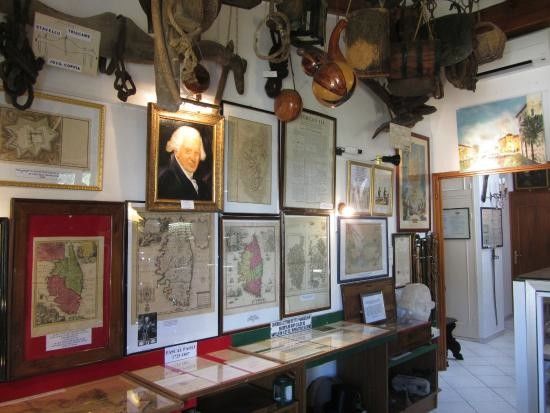
During your stay in L'Ile-Rousse and Balagne, meet Guy Savelli, this history buff who will retrace the history of Balagne and Corsica through a rich collection of various and ancient objects. .During the 1990s, this private museum was created by Mr. Guy SAVELLI on the history of Corsica. This Museum perched on the heights of CORBARA is in his personal house.
You will be able to discover: portraits, maps, vintage posters, handwritten letters, old musical instruments, many old books on the history of Corsica, paintings from the 16th, 17th and 18th centuries, pencil drawings, manuscripts on parchment from the 12th in the 17th century ...
There is also an extraordinary collection of styluses, the traditional Corsican knife, pistols, coins from the independent period, as well as many surprising objects.
Guy Savelli also collects everything related, near or far, to Pascal Paoli, u babbu di a patria.
To visit absolutely under the guidance of the owner.
This private museum is number 1 in Tripadvisor.

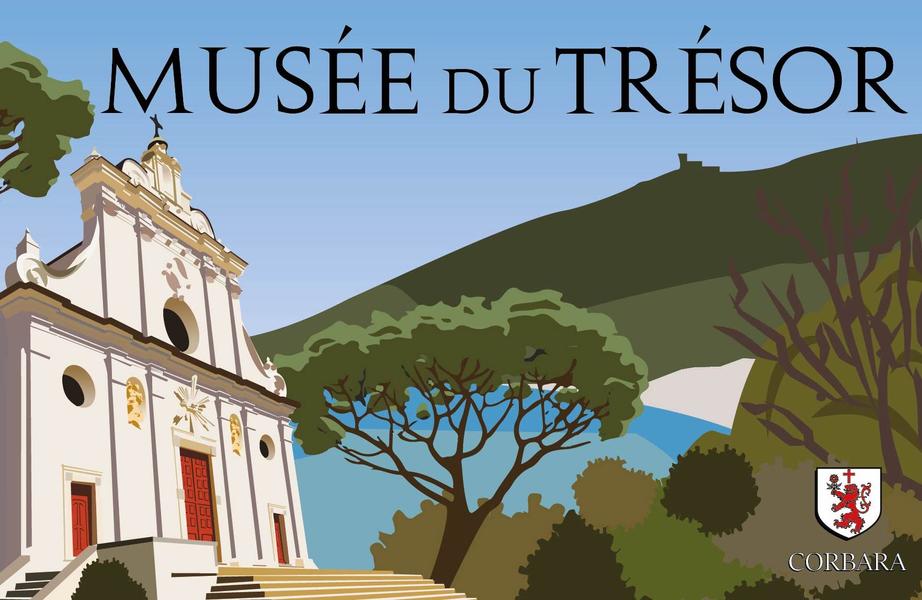
Discover the Baroque Collegiate Church, listed as historical monuments, its main altar and side altars in Carrara marble, its historic paintings and organs, its Treasury Museum with its collection of liturgical ornaments!Discover the religious heritage of Corbara's Collegiate Church A Nunziata at the Treasure Museum.
Here you'll discover numerous works of art housed in the two rooms of the former sacristy.
You'll admire two 17th-century pieces of furniture; a rich collection of priestly vestments from the late 16th, 17th, 18th, 19th and 20th centuries, many of them restored; 17th- and 18th-century goldsmiths' and silversmiths' pieces; a bull issued by Pope Benedict XIV on March 15, 1752, elevating the church to the rank of Collegiate Church; 17th-century reliquaries...
An extraordinary collection to discover, under the guidance of a guide.
Tours are guided, and the museum takes part in Museum Night and Heritage Days.

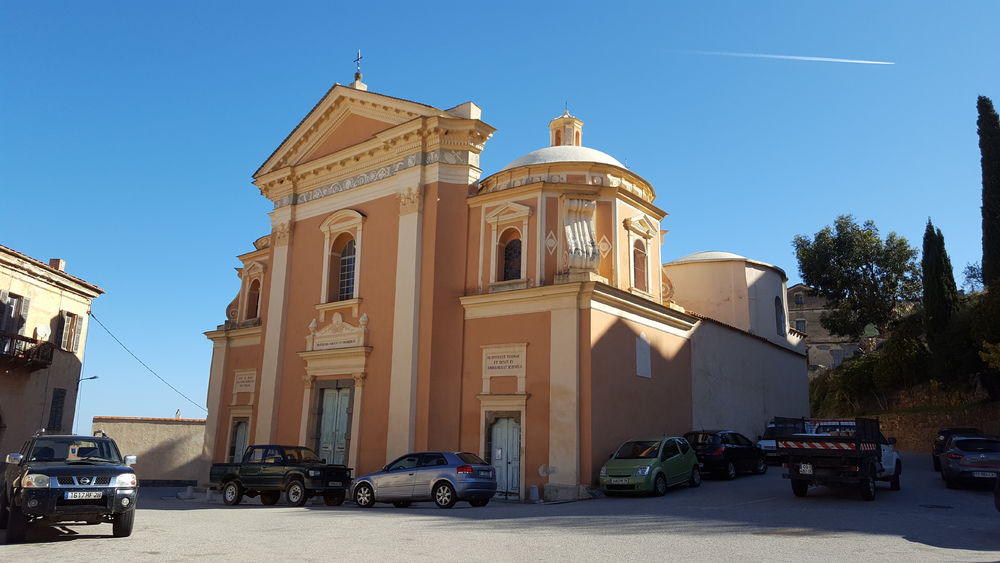
Visit the magnificent church of San Tumasgiu (Saint Thomas) in the heart of Belgodère village.

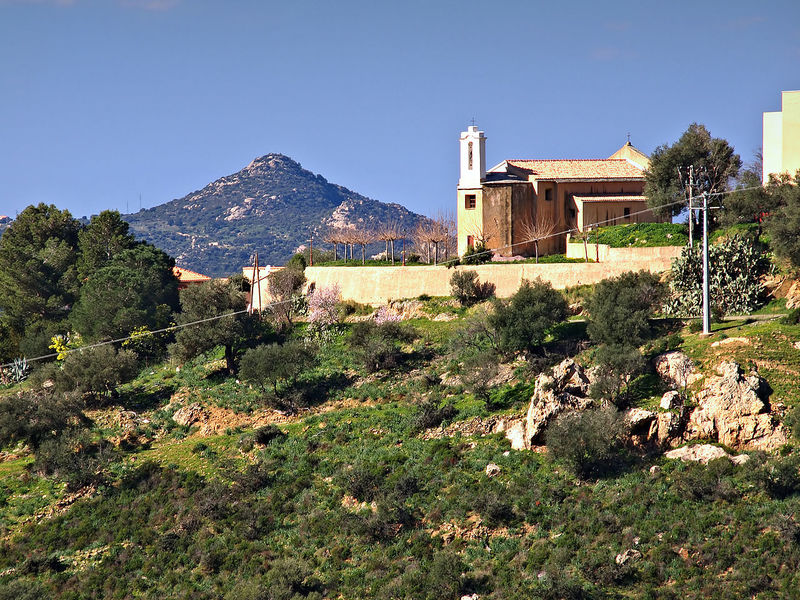
You'll find the chapel of San Ghjuvanni on the edge of the village of Belgodère, on the road to Occhiatana.Built in 1711 on the site of an old oratory, using stones from the destroyed church of San Marcello, this chapel is dedicated to St John the Apostle. It contains a baroque altarpiece in carved wood dating from 1604 and a polychrome statue of Our Lady of Seven Sorrows carved from an olive tree trunk dating from 1545, both of which are listed. On the third Sunday of September, the patronal feast day, a mass is celebrated here followed by a procession.


You'll find San Roccu chapel near Belgodère station, below the village. San Roccu day is celebrated every year in mid-August.


The convent of Nostra Signora delle Grazie in Belgodere was founded in the 16th century by the Capuchin monks. In 1590, the Servites settled there for good. Abandoned by the fathers, it fell into disrepair and is now in ruins.

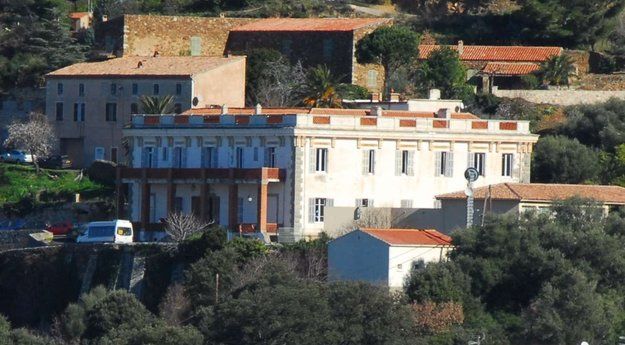
This vast 19th-century mansion stands on the side of A Costa hill. It was built in 1892 by Toussaint Malaspina, a local man and friend of Georges Clémenceau. The gardens of Malaspina castle, in the locality of Ajola, date from the late 19th century.From the height of its century of existence, Malaspina Castle still looks out over Belgodere. Its home, where it has always been useful over the years. Its construction was completed in 1892. This Victorian building, inspired by the Italian palaces, was first named Castle of La Costa and then Castle Malaspina.
The crypt adjacent to the building is still owned by the heirs of the Malaspina family and is due to be restored soon.
The public garden of the castle includes an orchard, an earthen terrace, a chapel in white Carrara marble, a caretaker's lodge and an agricultural building. It was the subject of a preliminary survey in 1996 and was included in the pre-inventory of remarkable gardens (Ministry of Culture, Directorate of Architecture and Heritage, and Ministry of Ecology and Sustainable Development). It has stood in the village since 1892.

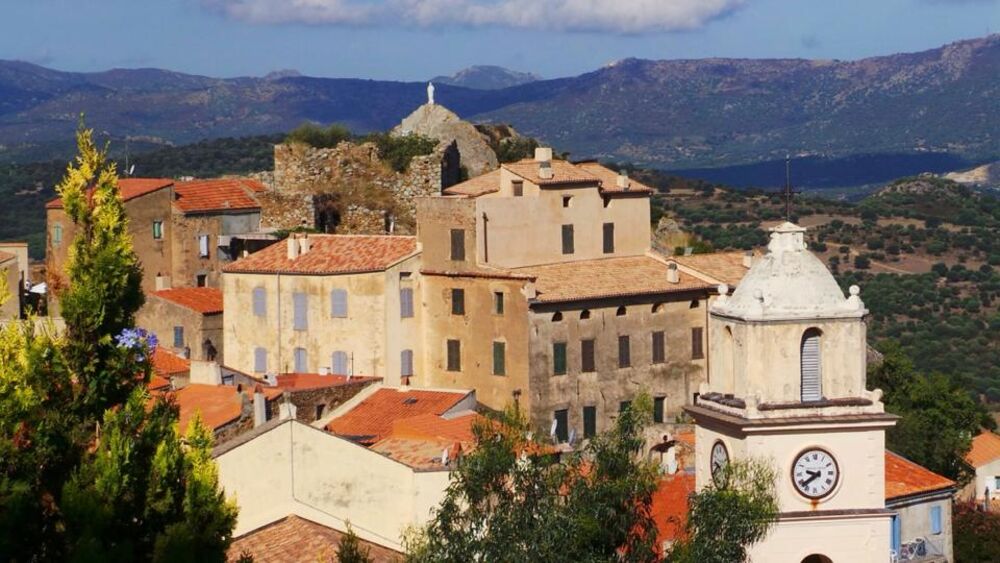
The village is overlooked by the vestiges of E Teghje, a medieval watchtower dating from the 16th century. A statue of the Sacred Heart of Jesus was erected there in the summer of 1991. The site offers remarkable views over the Réginu valley.


This Genoese tower dating from the late 16th century was built by Angelo Aijcardo on a headland 26 metres above sea level. It can be reached via a footpath near the Casa di Losari, and a flight of steps takes you to the top of the tower to enjoy a 360° panoramic view.

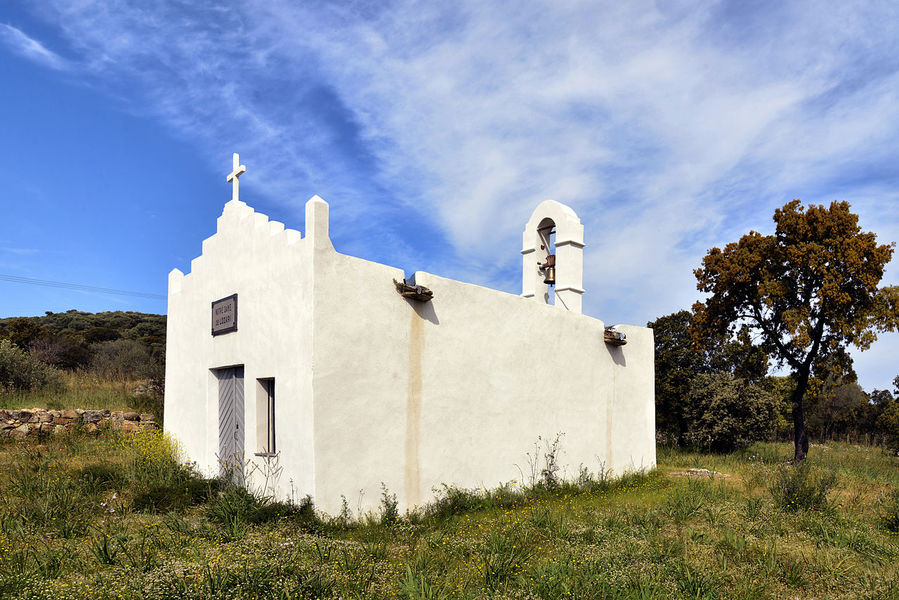
Longtime abandoned, it was renovated in 2015. An annual mass is celebrated here with many inhabitants who spent their childhood here. A number of shepherds from the Niolu area came to spend the winter in Losari with their families.

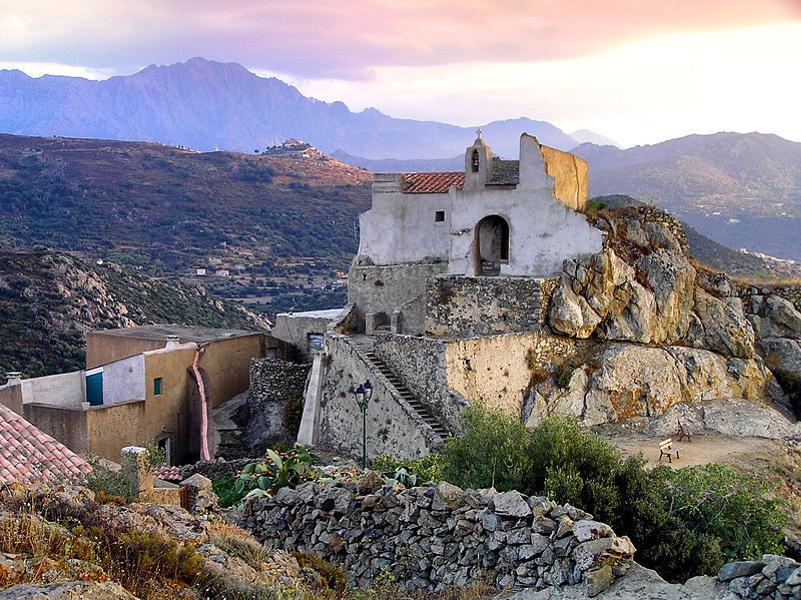
Completed in 1375, the chapel occupied the arms room of the old castle of Corbara. It offers a breathtaking panoramic view, making it a must-do if you're visiting Corbara.Completed in 1375 by Guido de Sabellis' descendant, Manonne, the "castel" (today's chapel) is located in the locality of U Forte, which marks the birth of a major urbanization around the village of Corbara, with the creation of hamlets and neighborhoods that would come to an end in the 18th century.
Partly destroyed by the Genoese, the building was named "Notre Dame des Sept Douleurs" (Our Lady of Seven Sorrows). In 1700, the Madonna chapel was established in the arms room of the old Corbara castel.

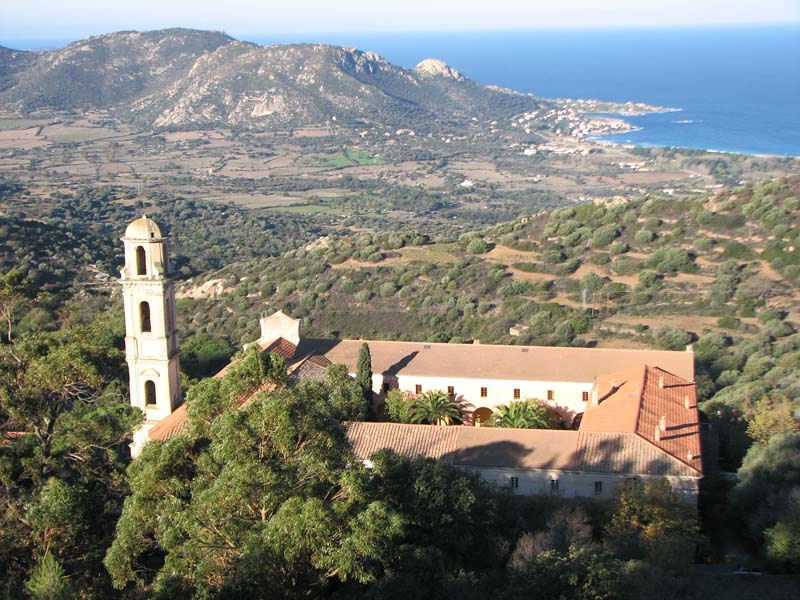
Saint-Dominique convent was founded in 1456 by two Franciscan priests of the Observantine Order. After being destroyed during the Revolution, the Dominicans rebuilt it as a place of study. It is now occupied by the community of Saint John.The convent of Saint Francis of Aregno was founded by the Friars Minor of the Observance in 1456, representing one of the oldest convents of the Franciscan province of Corsica. During the French Revolution, the conventual property became "national property. From 1857 to 1864, the Dominicans set about rebuilding the convent. The Dominicans restored it as a school for the children of the region. Later, it was equipped with a college of philosophy and theology for religious students from the province of PARIS. After the separation of church and state, the Dominicans were expelled and the building became the property of the commune of Corbara. Left abandoned, German and Austrian prisoners were placed inside. Then, in 1927, the convent returned to the hands of the Dominicans for 66 years. In 1993, the friars of St. John took over the convent after the departure of the former friars. Pasquale de Paoli took advantage of his numerous stays there to gather his friends and advisors from the Balagne region. Famous people have stayed there such as De Didon, Peyrefitte, Roncalli and Maupassant. It is thus a real emblem for the town of Corbara.


This 17th-century Baroque-style church was built to replace the previous church which had become too small at "Piazza Save". It was an annex of Aléria cathedral and was granted collegiate status by Pope Benoît XIV.

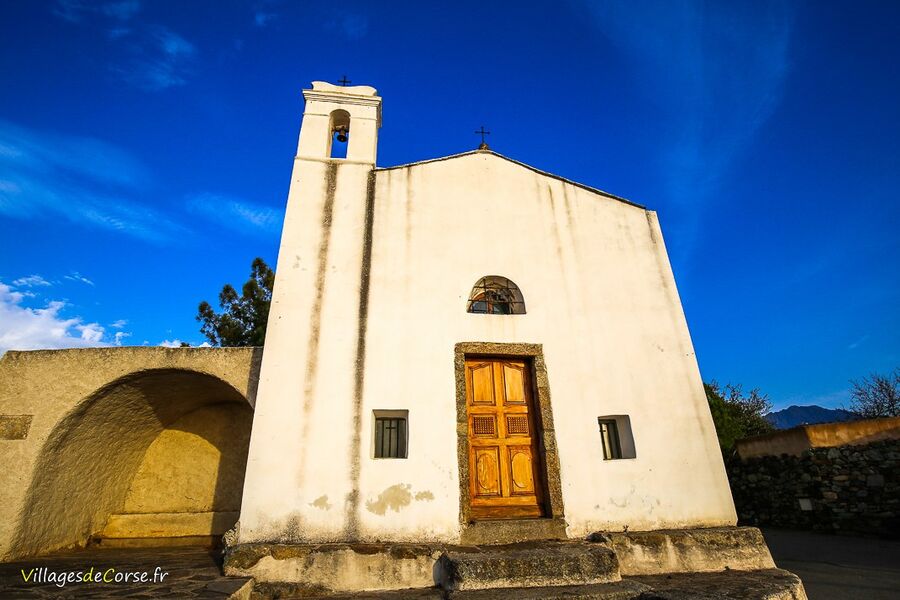
Located on the edge of the village, it was built during the 6th and 7th century. Mass is celebrated here every year on 29 June. With its breathtaking view, this marvel provides the local people with an ideal place to meditate.


Notre Dame du Lazio in Corbara is an ancient sanctuary of Balagne. It dates from the Middle Ages and was rebuilt towards the end of the 18th century.

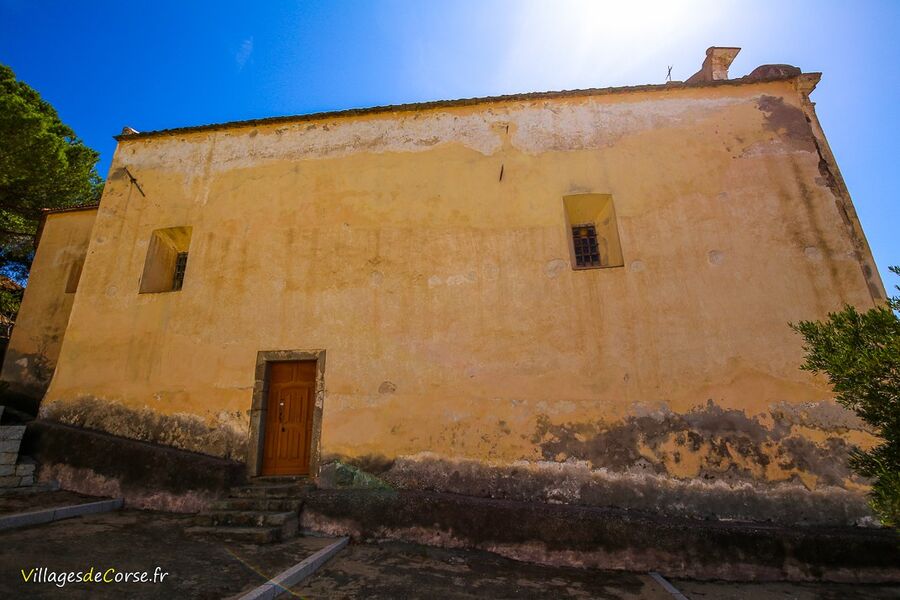
This building located next to the Collegiate church dates from the early 17th century. It is the seat of the Friary and the venue of various religious celebrations, includiing Saint Antoine (17 January) and Holy Week. The nave is decorated with paintings by artist Pietro Sicuri.

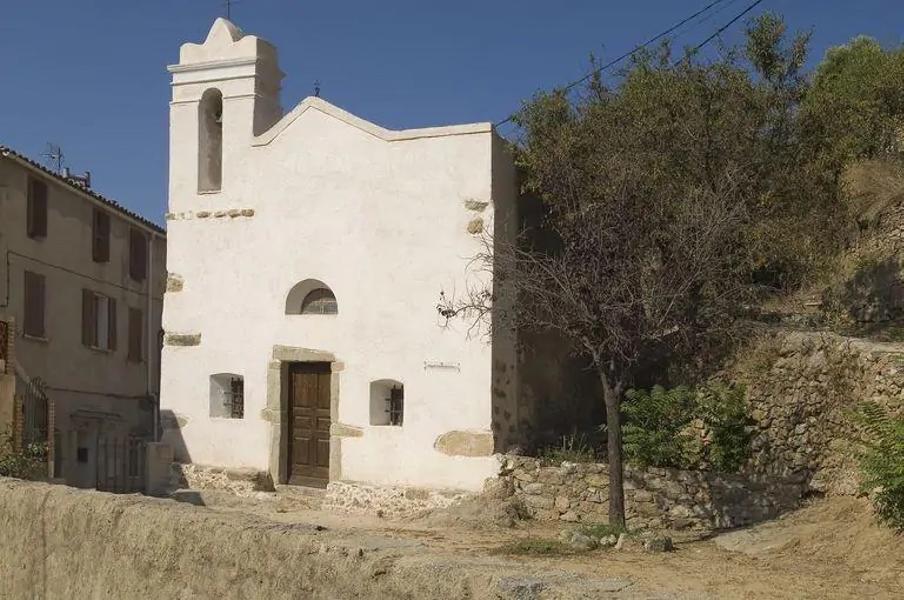
Located on one of the main squares of the village, Piazza di a Chjesa Vecchja, the chapel was rebuilt in the mid-17th century on the site of the old Medieval church which had been the parish church until the early 17th century when it became too small to accommodate all the followers.


Located in Costa village centre, the parish church of the Holy Saviour is home to many remarkable statues and works of art that are listed Historical Monuments, including the organ, paintings, sacristy furniture and one of the stalls.

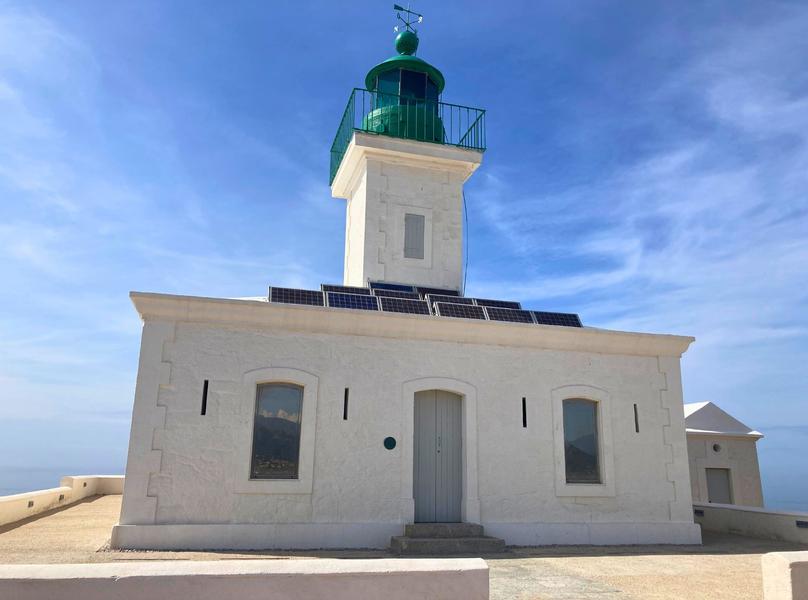
The Pietra lighthouse marks the entrance to Corsica's north-western coastline. It marks the end of your visit to the island of Pietra, where you can admire a magnificent view of the hinterland and the Balagne seaside.
A wonderful walk!It dates from the 3rd quarter of the 19th century, during the reign of Napoleon III. It is built on the highest point of the island of La Pietra, linked by a dike to L'Ile-Rousse. It marks the entrance to Corsica's north-western coastline. The lighthouse known as "La Pietra" was part of the second wave of lighthouses to be built in Corsica, along with the lighthouse at Ajaccio.
The current lighthouse is a square tower, centered on a square base, in smooth masonry, painted white, with the lantern painted green. The lighthouse is powered by solar panels and automated.
The interior of the lighthouse will soon open to the public during the summer! You'll be able to discover a museographic space dedicated to the history of the lighthouse, the islands and the town of L'Ile-Rousse, through photos and explanatory panels.
Discover the island of La Pietra and its lighthouse, recently embellished and in the process of being planted. Enjoy the beautiful pedestrian promenade and marvel at the spectacular panoramic views over the town, the villages of Balagne and the majestic surrounding mountains.
Whether you're a nature lover or a fan of breathtaking views, this must-see site in L'Ile-Rousse is sure to please.

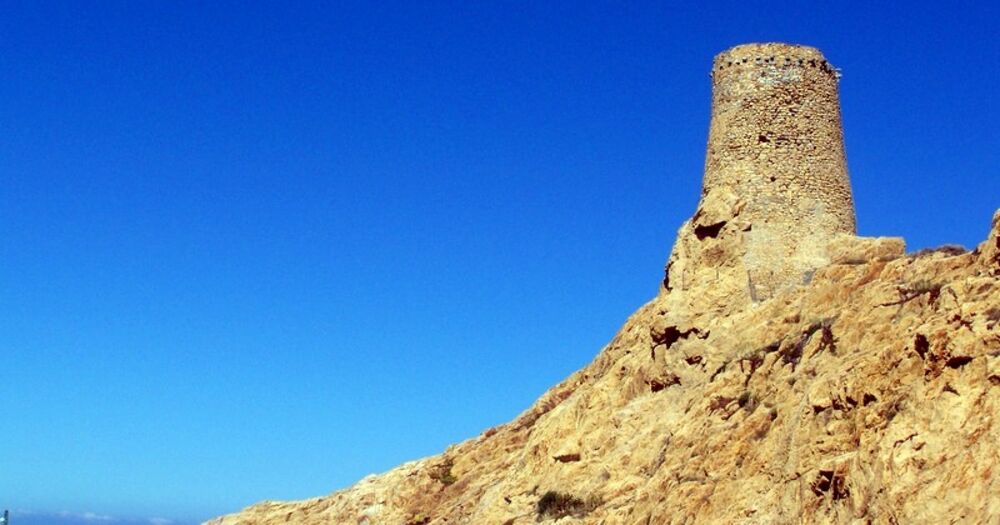
This military building from the 16th century features a round tower whose purpose was to ward off attacks from the Barbaresque corsairs. It was restored in the early 1980s.


Created in 1834 and inaugurated in 1852, this pleasant square is the heart of the town. Surrounded by ancient plane trees, it is an inviting spot featuring a fountain known as "the pump" which is decorated with statues, including a bust of the town's founder, Pasquale de Paoli.

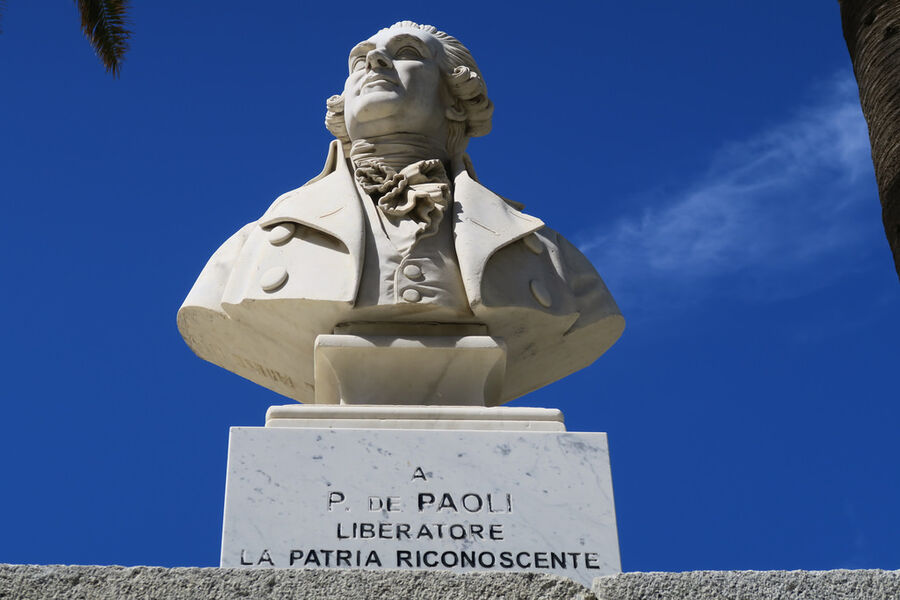
In L'Ile-Rousse, the bust of Pasquale Paoli takes centre stage on the square of the same name. Paoli founded this town during the Corsican Revolution. He is the father of a democratic constitution, a national hero whose wisdom shone out across Europe.

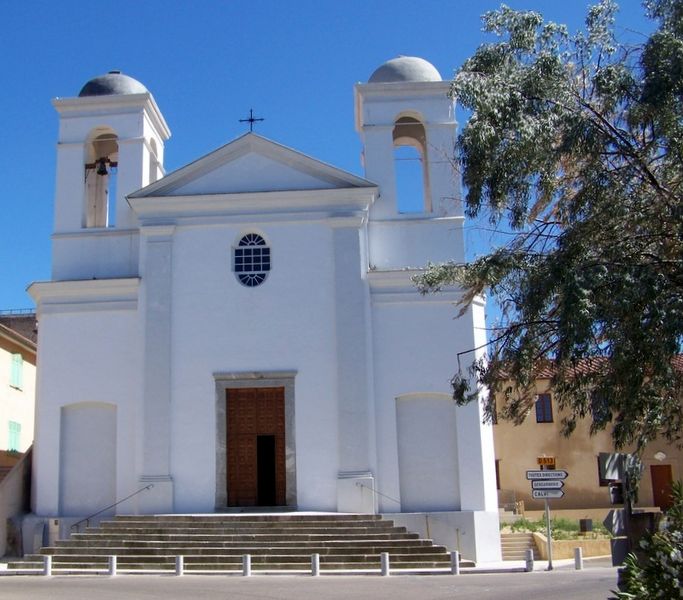
Commonly known as "Monks' church", it was built between 1825 and 1850 by Tony Cardella, the great Corsican master of the 19th century. Some of his paintings can be found inside, including his "Stations of the Cross".


In 1853, the people of L'Ile-Rousse wanted their own community of the children of Saint Francis. The house adjoined the Church of Mercy and for a time was the town's only place of worship. It houses the private school of Notre Dame.

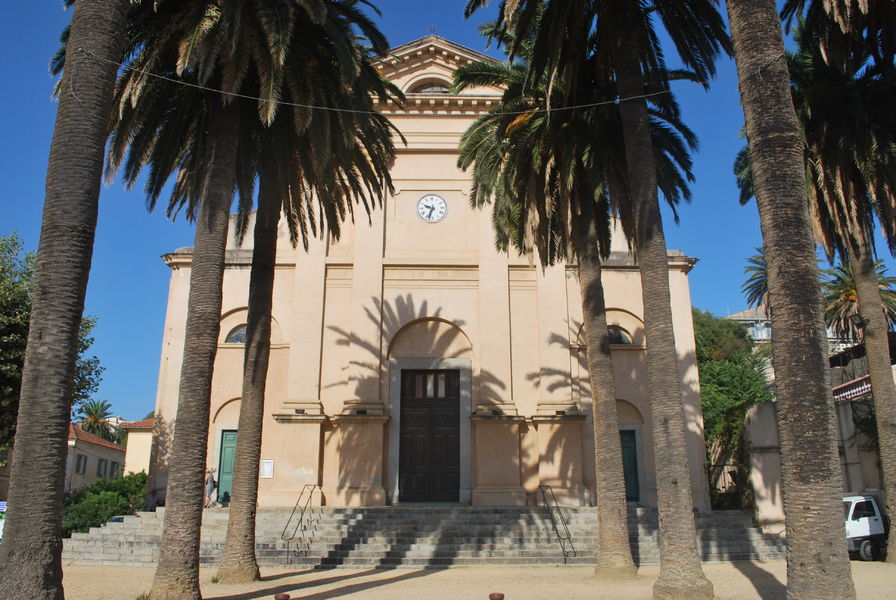
Built in 1887 to replace the old parish church of Le Scalu and its successor, Notre Dame la Miséricorde, which had become too small. This church was more spacious and occupied a more central position in the expanding town.


Built in 1844 by the mayor, Mr Piccioni, essentially to replace the outdoor market. The region's producers can be found here every morning.


Now the Town Hall, this building built in 1763 by Pasquale de Paoli was occupied by the military headquarters of L'Ile Rousse and the King's lieutenance, at the initiative of the Count of Vaux.It was a military estate until 1904, when it was called the General Ambert barracks. Then, the mayor of the time, President Gavini, bought it and one day made it the seat of the town hall and the social services. The gabelous had their post in this old barracks (today the town hall) as well as a shelter at the bottom of the small cove under the Pietra lighthouse. This building was marked not so long ago on the staff maps. However, it was rebuilt and is now used as a marine archaeology shed.


The old gunpowder magazine named Tour du Scalu stands on the current Place de la Mairie. Refurbished in 2012, it was built in the 17th century when it went by the name of Tour des Fabiani. It was a salt warehouse before becoming a gunpowder magazine and, finally, a prison.


Le Scalo is an old natural fishing port that's commonly known as the "fishermen's jetty". So it's no surprise that the structure has always had close links with the fishermen's market located at the bottom of Rue Notre Dame. This market was refurbished in 2002.

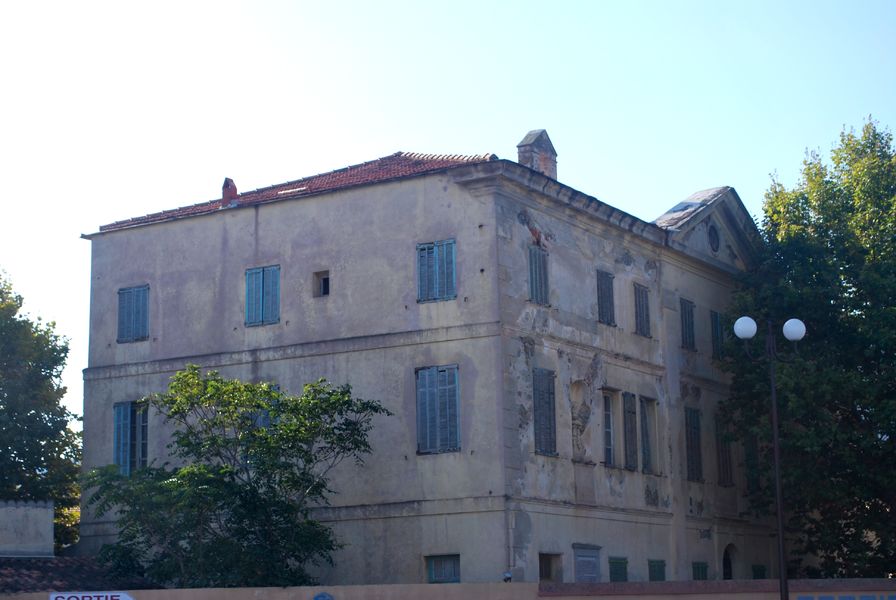
Le Scalo port is an ancient, natural fishing port commonly known as the "fishermen's jetty". The structure has indeed always had close links with the fishermen's market located at the bottom of Rue Notre Dame and which was renovated in 2002.

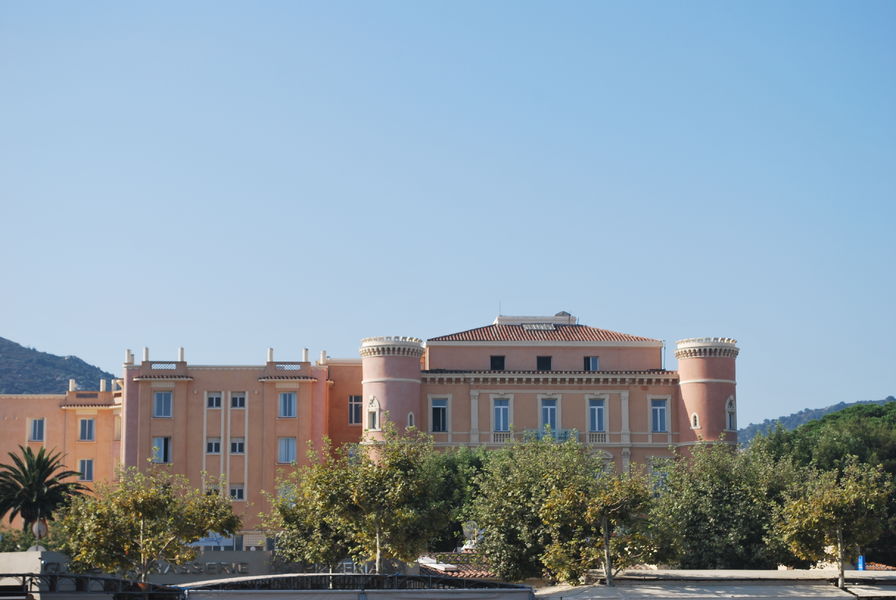
The Piccioni palace is the highest and one of the most famous buildings in the town of L'Ile-Rousse. Magnate Sebastien Piccioni, dissatisfied with a mere town-centre abode, ordered the construction of this veritable château which is now the Hôtel Napoléon.

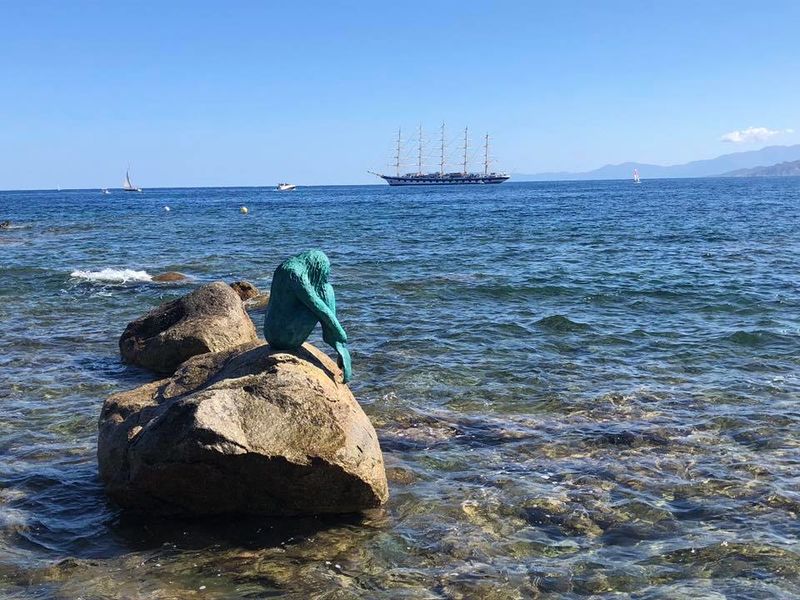
The Mermaid by Corsican artist Gabriel Diana is a lost-wax cast bronze sculpture of human dimensions. Competing beautifully with her Copenhagen counterpart, A Sirenella sits on a granite rock close to the shore.

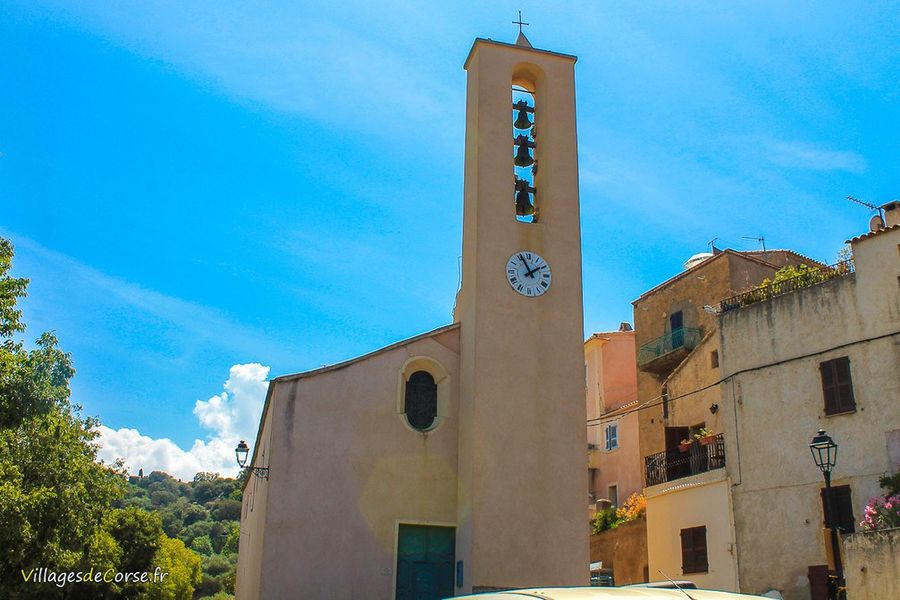
This Roman church was destroyed in the 16th century by the King of Algiers and rebuilt in the 17th century. In 1887, the exterior was enhanced. The church boasts a tower with 3 bells and a listed painting which has been restored.

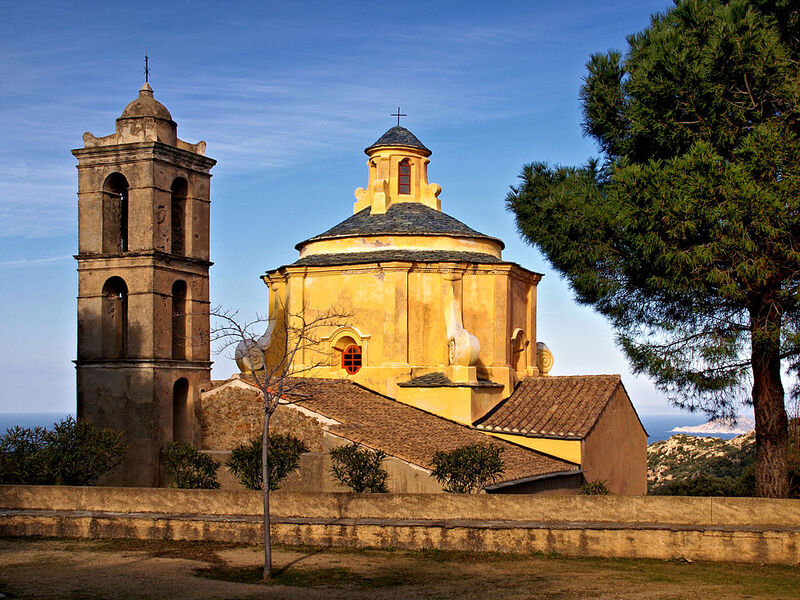
Of Baroque style, it dates from the latter half of the 17th century. The dome was added in the 18th century. The chapel was built at the initiative of a Jesuit priest who wanted to protect the population from its enemies. San Roccu day is celebrated here every year on 16 August.


Built in the 11th century, this Romanesque chapel was stripped of its sacred objects and religious ledgers during an incursion of the Turks who then burnt and destroyed it. Its only nave has been consolidated with what little was left of the ruins.Several attempts have been made to restore and consolidate it, which has not been easy since the chapel was seriously damaged by the transformations it underwent around the 17th century (apse cut off, extended nave). There is an "arca" inside, as evidenced by the marble plaque on which is engraved "ANNO 1686 DEL MONTICELLO". There are also funeral plaques of the oldest inhabitants of Monticello.

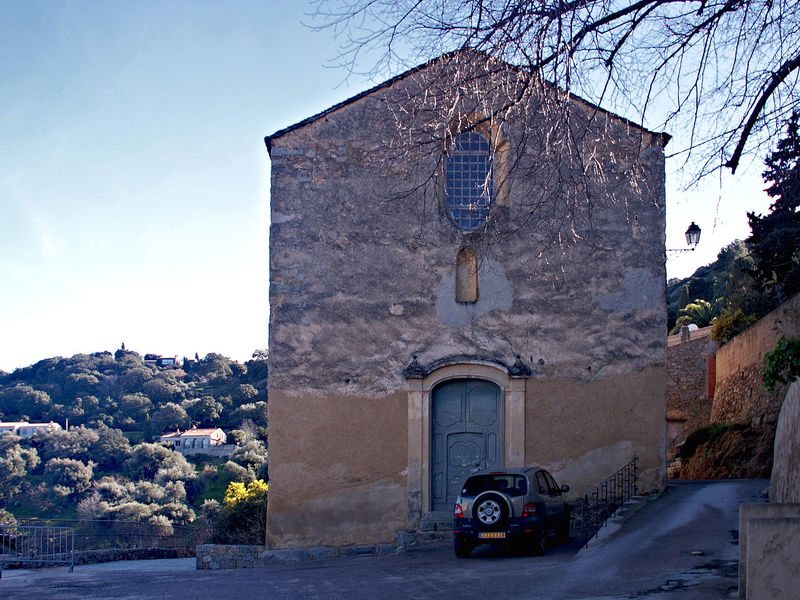
Built in the 17th century, it boasts a remarkable decor with a smooth, shiny appearance thanks to the use of ground marble. The interior frieze is superbly decorative. The walls are covered in timber which forms two benches on either side of the entrance.

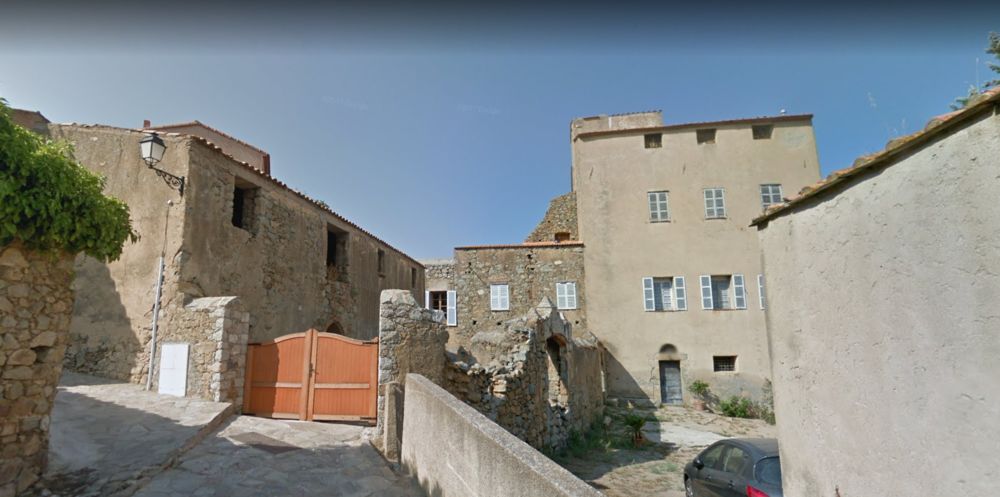
Protected by the VMF built heritage label, this 17th-century private mansion is the Fabiani Malaspina palace and was the home of Pasquale Paoli from 1790 to 1796. One of its lounges is decorated in frescoes depicting 17th-century L'Isula Rossa. Napoleon Bonaparte also stayed here.

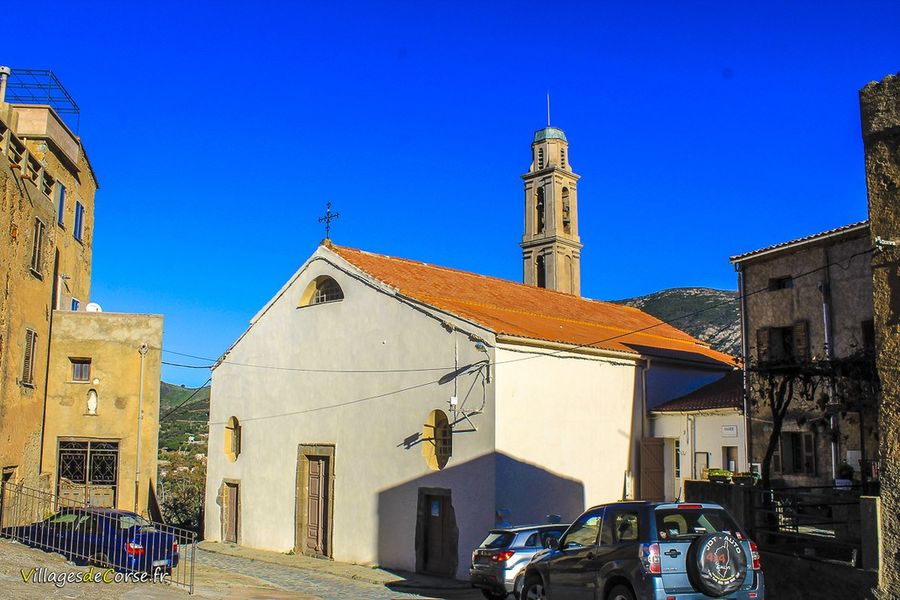
Formerly the church of the Assumption, it is now the parish church of Saint Bartholomew. It dates from the 2nd quarter of the 17th century. Rebuilt in 1620, then reworked in 1627, it features a 3-level Baroque bell tower with a small lantern.


The amazing tombstone of Damaso Maestracci, whose naive art reminds us of the work of Ferdinand Cheval, is located in the cemetery's north entrance. He was the creator of the War Memorial and also bedecked his own house with some imposing curiosities.

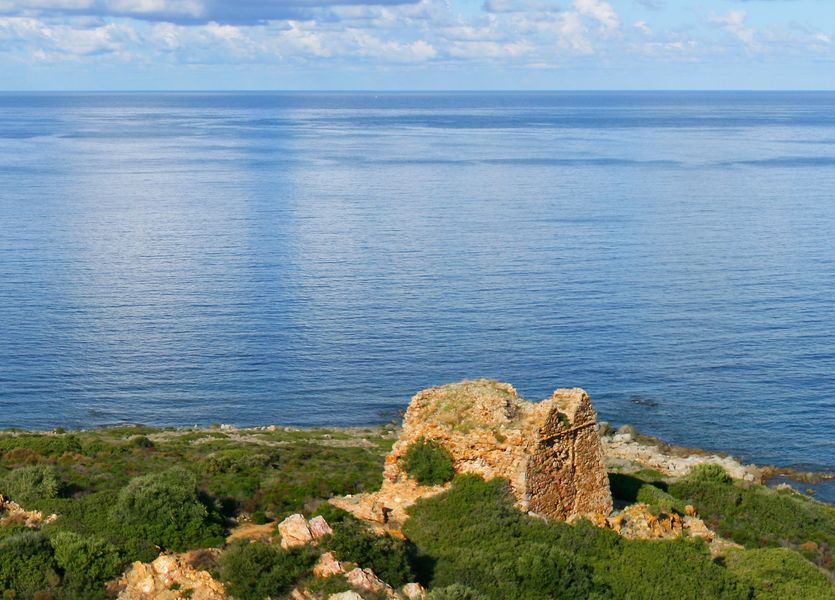
Also known as Cala Rossa or Di Tre Moline, the tower was built in the 16th century by the Genoans, 36 metres above sea level and the little cove of Algaja.

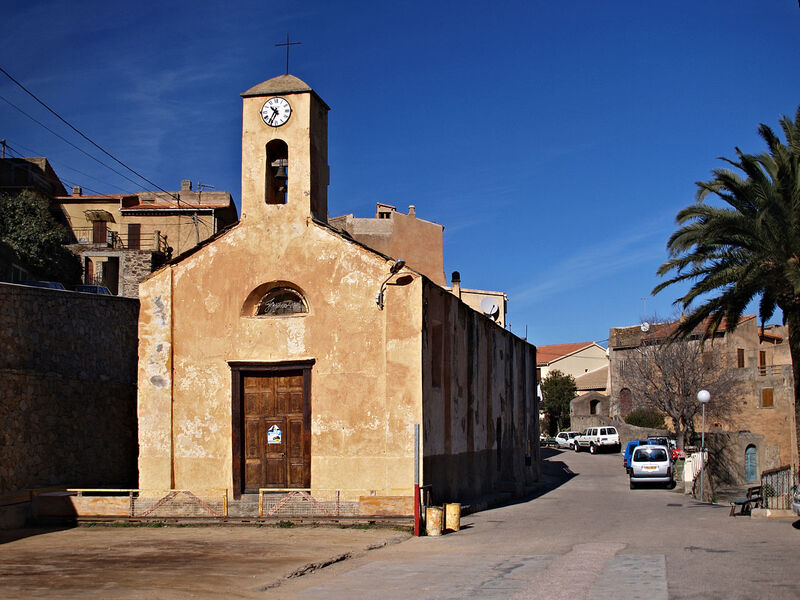
The recently-renovated Friary building is occupied by the Association Per l'Animazione d'Ochjatana. This ancient chapel boasts remarkable acoustics. During the summer season drinks can be purchased here.


The ancient foundry's bellows support is still visible in this simple single-vault construction. It was in ruins before being converted into a fountain and decorated with a marble bas-relief feature by Toni Casalonga which represents the four seasons.

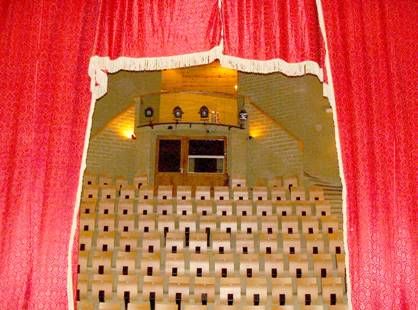
A small construction of earth which hides a 120-seat auditorium. An original venue used by singers and musicians from Corsica and beyond, for research, experiments, rehearsals and recordings.

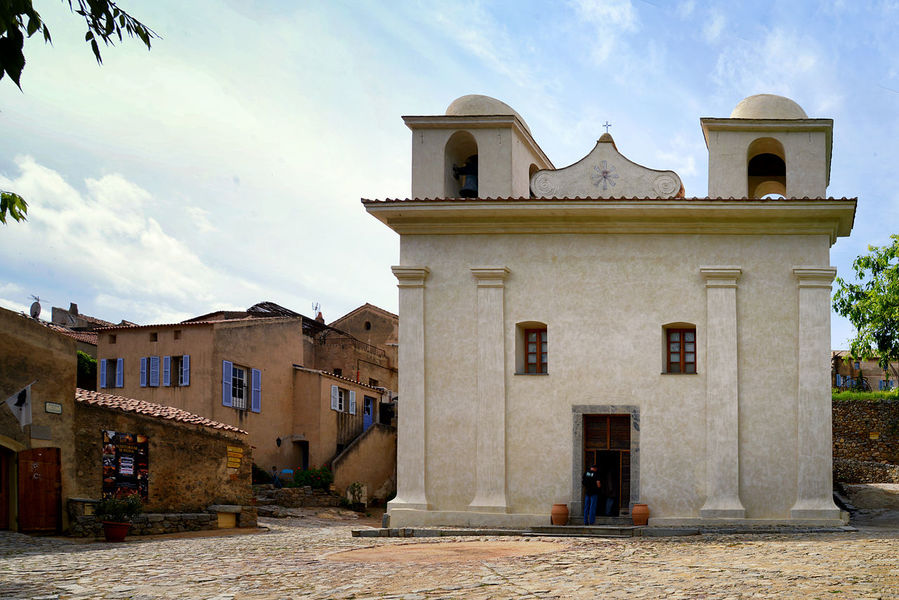
A transformation of the choir area of this religious building, during the 18th century, included the addition of wall paintings in the apse by Toni Casalonga. The church also features two small bell towers and a remarkable organ which was built in 1881. Annual celebrations are held on 15 August and 8 December.


This former stockyard is a listed historical monument which was converted in 1974 into an open-air theatre. Restored in 1999, this outdoor venue enjoys views over the Laziu Valley, the Corbara Convent and Mount Sant'Anghjulu.

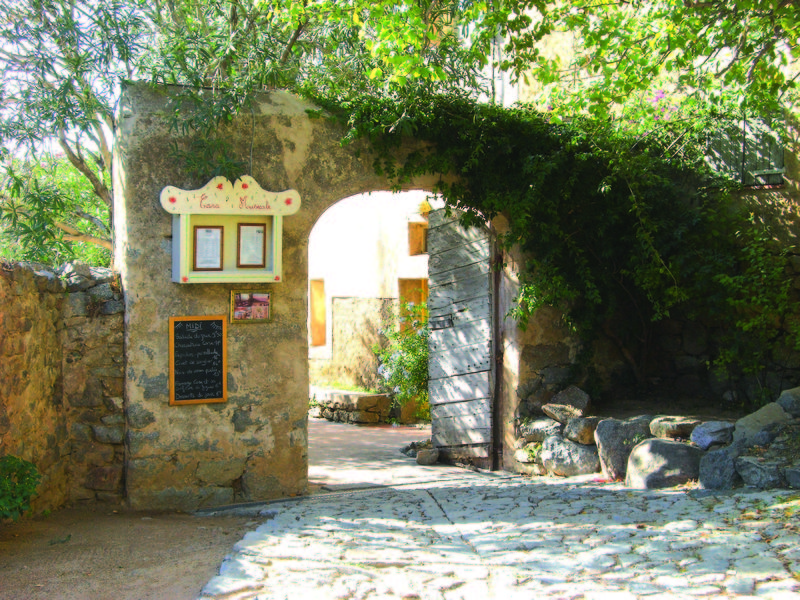
The Casa Musicale is an 18th-century mansion which, since 1995, has been a venue for the Centre Voce artists who stay here as well as others who come for various events and discussions. It is also a guesthouse.


This 18th-century mansion house, now a boutique hotel, has always belonged to the prominent Franceschini family of Balagne. It is a magnificent seaview property featuring three rooms and two suites, as well as a reputed restaurant.


The former Presbytery in the village centre is one of the oldest buildings in Pigna. Fully renovated, it is now an art and craft shop run by the Casa di l'Artigiani association.

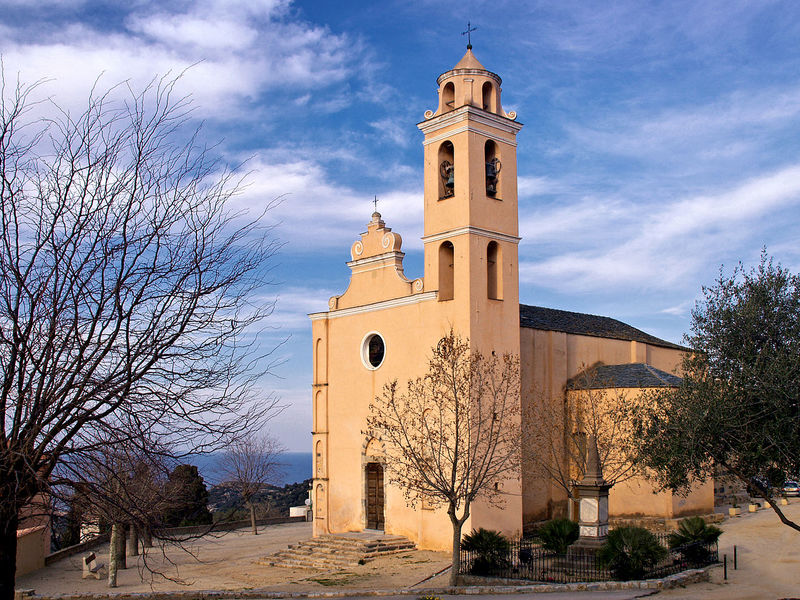
The Parish of Santa Reparata is located on a spur where the church and bell tower stand tall. They were built during the 16th and 17th centuries, most probably on the site of an older building of which only the apse and the south wall of the choir still remain.


This 18th-century Baroque-style church is dedicated to San Roccu. Every 16 August, in honour of the saint, the population gathers "in allegria" for two days of celebrations and a torchlit procession.

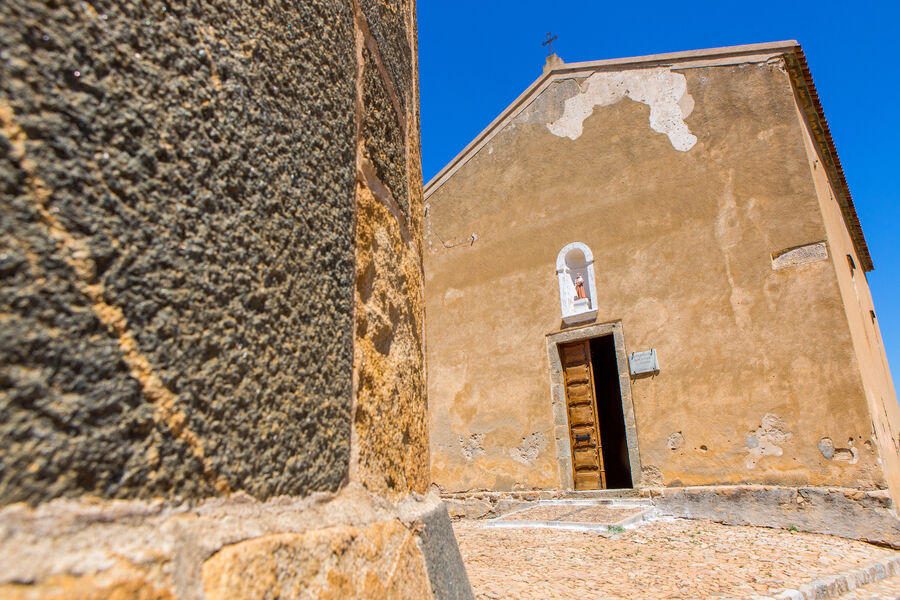
The friary of Sant'Antone, behind Santa Reparata church, was built in 1600 and restored in 2005. In 1618, it was fitted with wooden stalls made by the Genoese master, Joannes Andreas Lucchini, and frescoes were painted on the ceilings.


The chapel belongs to the municipality and stands on the edge of Santa Reparata on the road to Monticello. Dating from the 17th century, it is dedicated to the illustrious Franciscan preacher from Tuscany. San Bernardinu is celebrated on 20 May.

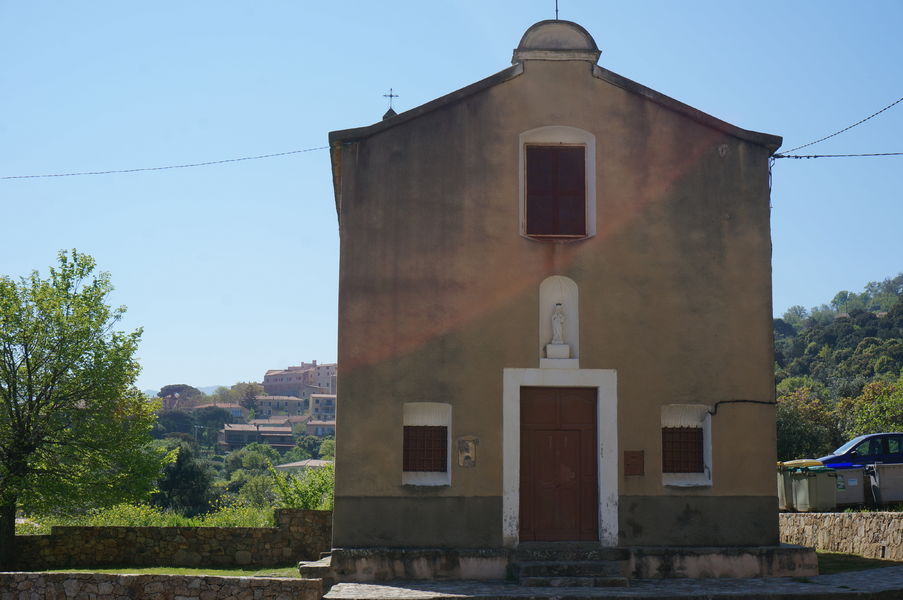
Dating from the 18th century, it was originally an oratory. It features some marble frescoes and a superb wooden sculpture of Christ by Antoine Franceschini, a village craftsman who also had the gift of healing. The roof was restored in 2003.

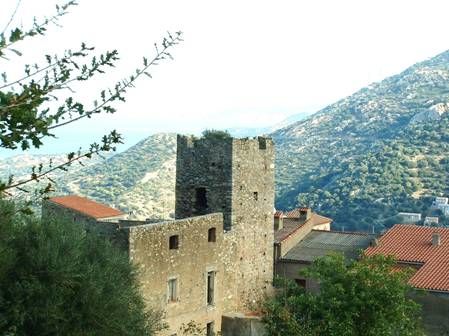
During the Middle Ages, the fiefdom of Santa Reparata surrounded the old castle and four towers of Palmentu. The oldest of the towers dates back more than a thousand years. Two of them are still partially visible and have been converted into housing.


Built by Capuchin monks in 1606, it was abandoned during the Revolution.



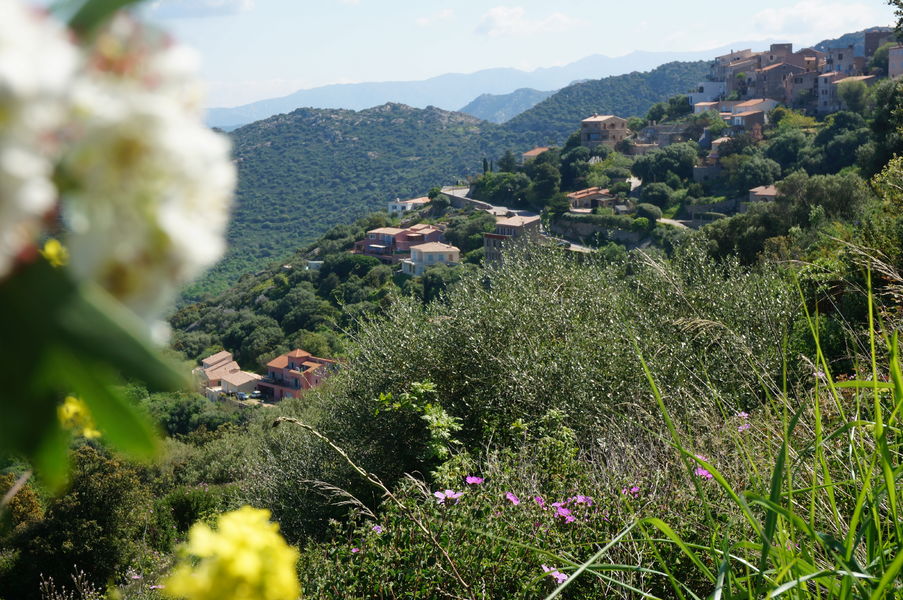
Monticello is a small, picturesque village built amid olive trees around a lovely little square where the locals love to gather for a game of boules or to sip a cool beverage on the terrace of the bar.


Santa Reparata straddles the hills of Santa Suzanna and the Mont Sant'Angelu. Take your pick, between the blue-green blend of the Palazzi Valley and L'Ile-Rousse Bay, or the wooded countryside of the green Reginu Valley.

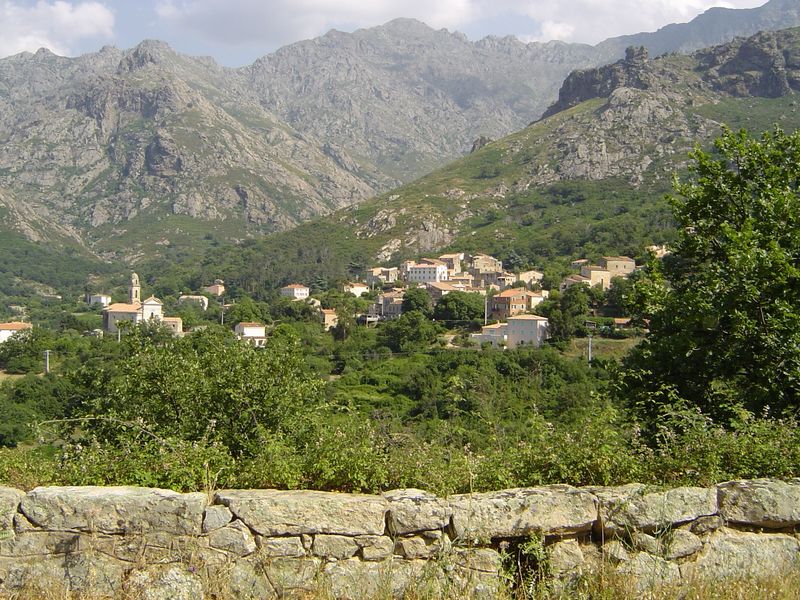
Balagne's smallest village has some pleasant surprises in store for you. Costa is a wonderful place, full of old stone houses, alleyways and arches. The only way to visit is on foot.Next to the town hall, the Malaspina House, a beautiful residence built in the 17th century, overlooks one of these vaulted passages. Take your time in Piazza Cumuna. Stop in front of the church of San Salvatore and enter to admire its paintings, olive tree statues and beautiful organ.
And if you feel like quenching your thirst, push on to the 17th century washhouse where the water gushes out of the fountain with a purity equalled only by its freshness.

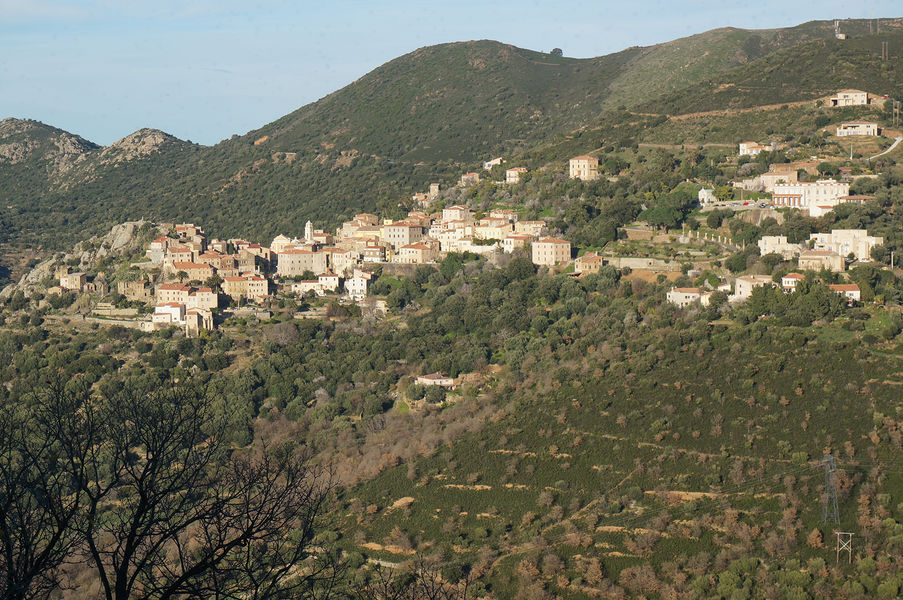
Succumb to the poetic charm of Occhiatana. Built on the Pinzu Sordu mountainside, this beautiful village offers a magical blend of tradition and modernity.

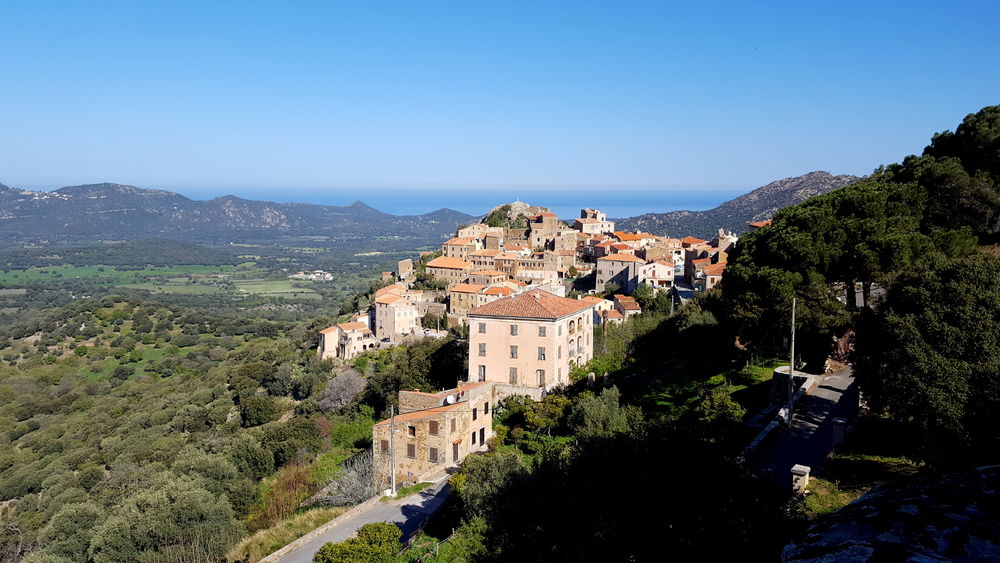
Standing proudly on its rocky spur overlooking the Reginu valley, the vibrantly colourful village of Belgodere invites you to explore the district of La Cima and the Malaspina castle!Follow in the footsteps of the Marquis of Massa, a powerful feudal lord, who one day in 1268 retreated to the top of the teghje (rocks) before deciding to settle there.
Explore the fortified part of the village of Belgodere, you won't regret it! Pass under one of the three vaulted entrances and visit the Cima du Fondu and Cabanne districts. Climb to the top of the teghje on the remains of the tower and enjoy the exceptional view.
Take a break in the centre of the village and sit at a café before heading to the parish church, which is a listed monument. Don't forget to look up on the way out of the village if you're heading towards Costa to see the Malaspina Castle.

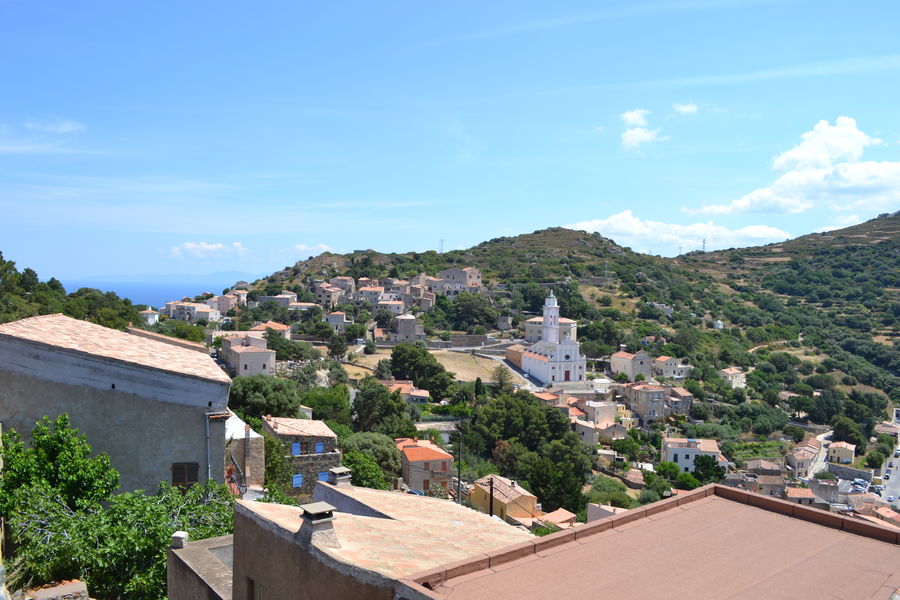
Explore one of the oldest villages in Balagne, and the hamlets that stretch majestically across the hills of Mont de Guido, Borgu and Pietralta, just below Mont Sant'Angelo.Travel to the heart of Moorish architecture by visiting Corbara, where a certain native Davia became Empress of Morocco. Walk along its beautiful houses, stroll through its streets and alleys, pass under its vaulted passages to discover the typicality of a Balinese village.
Rich heritage and history
You can visit the many religious buildings such as the chapel of Notre-Dame des Sept Douleurs, the church of the Nativity of the Virgin (known as Notre-Dame de Lazio), or the many other chapels or oratories, not forgetting the convent of Saint-Dominique.
Don't miss the obligatory visit to the parish church of A Nunziata to discover the Treasure Museum with its collection of liturgical ornaments in the sacristy. If you don't want to miss anything about the heritage and the famous people of the old village of Corbara, let yourself be tempted by the audio guide available at the entrance.
On the way to the village square, stop at the fountain of the Sbollaru. Under a beautiful vault, this spring, known for its capricious flow, flows in a beautiful granite basin. Try the experience and quench your thirst here to see if, as the saying goes, he who drinks his water will eventually calm down.
Climb to the top of the village to the house of Monsieur Guy Savelli. Here, portraits, maps, period posters, handwritten letters, old musical instruments, welcome you to the heart of a house museum.


A village of flaxen houses with sky-blue shutters awaits you. This is Pigna, a delightful village which has re-emerged like a phoenix from the ashes. A blend of stone, clay and tuff has returned this place to its former splendour.

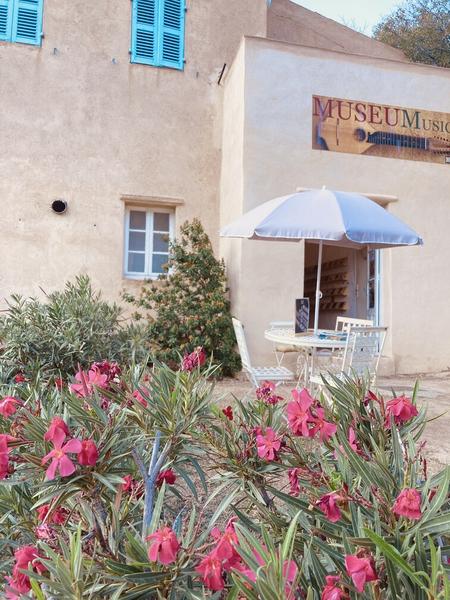
MuseuMusica is a center for research into the formation and dissemination of musical culture, past and present.
It is a place where you can discover a collection of instrumentarium from Corsica and elsewhere, as well as an audiovisual space.It would undoubtedly be necessary to go back to prehistoric times
to trace the origins of some of the most typical forms
musical traditions.
Indeed, the men of these early gestures were already elaborating sounds and music, using natural materials and shells, and later making and using the first real instruments; those generally known as the oldest are, everywhere, drums, flutes of reed, horn or bone, the first Jew's harps,
horn or bone flutes, and the first Jew's harps.
Corsica is rich in vestiges attributed to these peoples
stones: dolmens and menhirs (Stantari, also known as Palatini)
also known as Palatini) were the inspiration for cults that the Church
banned in Corsica in the 5th century. The many invasions that have followed one another throughout the island's history have left their mark on sound.
Instruments have evolved and been transformed, and their use has always been closely linked to that of sung poetry. Perfectly suited to the accompaniment of traditional song, they almost fell victim to the fashions and, sometimes, the repression of successive occupiers.
of successive occupiers.
Wind instruments (pivana, pirula, cialamella)
disappeared from the Corsican soundscape practically
early 20th century.
The cetera, a diatonic instrument, gradually gave way to the chromatic guitar and its repertoire. A period of oblivion followed, until the cultural revival of the 1970s.
Since then, and increasingly so today, these instruments
the esteem and place they deserve.
They even inspire new creations. We find them
alongside more modern instruments and electronic
and other electronic generators.

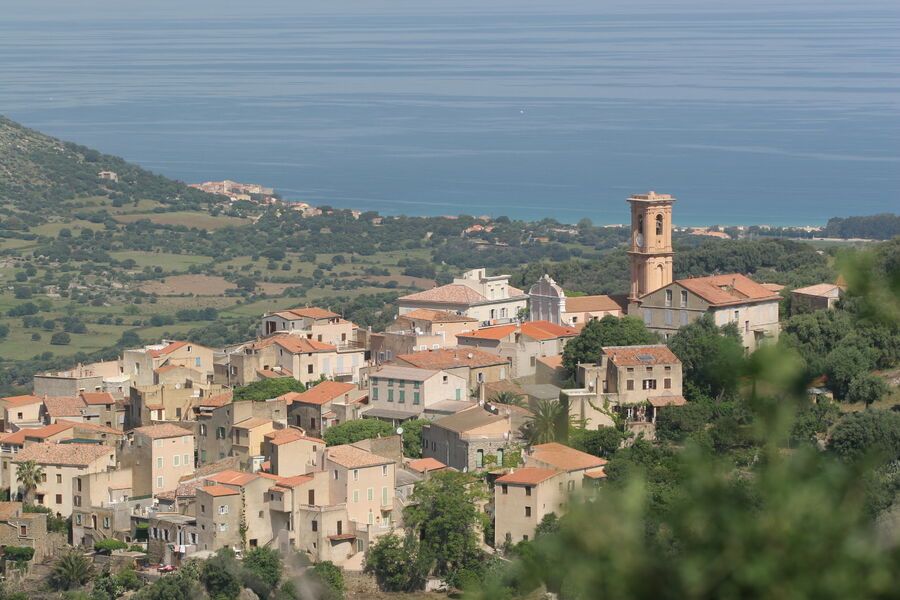
A masterpiece of Romanesque Art and the flavour of almonds... This village takes delight in perpetuating ancient customs. It still organises traditional processions followed by festivities around an open-air meal.The village and its two hamlets, Torre and Praoli, located on the hillside, overlook an agricultural plain that extends to the sea.
Arboriculture has been one of the riches of the town: olive trees but also citrus and almond trees have long shaped this landscape, unfortunately damaged by fires.
Aregno was known for the quality of its oranges, considered to be the best in Corsica; they were even exported to the continent.
The first Aregno orange trees were imported from Portugal in the 17th century. One variety of orange is called "AREGNO citrus sinensis osbeck".
In January, the blessing of the oranges takes place, and the procession of Saint Anthony the Abbot, whose statue they adorn.
The village is also known for its almonds ... At the end of the 19th century, almond cultivation covered 3000 ha of the island.
By the middle of the last century, it only represented a hundred hectares.
It was in 1997 that the rural center decided to give the almond tree its nobility through its cultivation and the organization of a rural fair on the first weekend of August.
Almond and its derived products from ancient local food traditions are celebrated there.
Sights...
Trinity Church: a real gem of Romanesque art, built from multicoloured granite. Listed as a Historical Monument since 1883, it was the seat of the Aregno parish in the diocese of Aleria in 1177. The interior wall paintings dating from 1449 and 1458, "The Four Doctors of the Church" and "Saint Michael Slaying the Dragon", are also classified works.
Saint-Antoine Abbé parish church: located in the heart of the village, this Baroque church features a tall ochre-coloured bell tower with 3 arched levels. The front facade of pink striped with white is flanked by sculpted side doors. The date 1818 is engraved on a cornerstone. The church houses some works belonging to the municipality which are listed Historical Monuments, including canvas paintings, "The Death of Saint Francis-Xavier" and "The Virgin and Rosary with Saint Dominic and Saint Catherine of Sienna", some wooden furniture (prayer pulpit from 1714 and 18th-century friary stalls with four seats in stained, waxed wood) in the Saint-Antoine chapel.
Vestiges of San Quilicu Chapel, a Romanesque building dating from the 10th century.
Events: an almond festival, "a fiera di l'Amandulu" (first weekend of August)

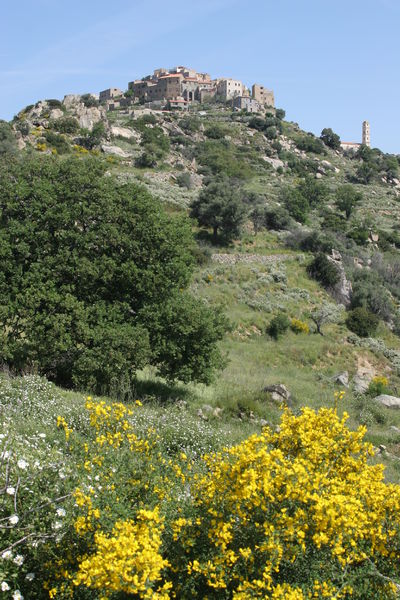
Perched high on a hill and surrounded by the riches of Balagne, this village, one of the oldest in Corsica, must be the finest example of Corsican medieval architecture. Sant'Antonino is officially rated among the most beautiful villages in France.Built in the 9th century and located at 500 m. altitude and thanks to its eagle-nest construction, it overlooks and observes the whole of Balagne in 360 °.
You just have to walk through its narrow and stony streets, its network of galleries and vaulted passages, all forming a downward spiral from the top of the rocky outcrop on which it was built, to appreciate the preservation of this jewel.
Its medieval architecture and its narrow streets paved with very old stones have contributed to its classification among the most beautiful villages in France.
Overlooking the sea, this "fortress" in the shape of an eagle's nest was built in the 9th century; it dominates the whole of Balagne and observes it at 360 °.
It is made up of around 75 residences, welded to each other, and which wrap around a granite peak forming an embryo of a labyrinth to better resist the possible invader.
Due to its position, it is said to be visible from all sides in Balagne. Founded by Ugo Colonna in the 9th century, its establishment at the top of the hill made it possible to take refuge and defend itself there during the Moorish invasions.
Sights...
The 17th-century A Nunziata parish church and multi-level bell tower.
Chapel of the Saint Antoine Friary, built between 1760 and 1770.
Ancient bread furnace.
Vestiges of the old Castellu fortifications.
Notre Dame des Bergers chapel.


A Ghjesgia di a Trinità di San Giovani... This building dating from around 1100 is an absolute gem of Romanesque Art.The granite blocks constituting its facade are of 3 different colors, 3 being the number of the perfection of the Trinity: beige symbolizes the Father, green, the Son, and red the Holy Spirit.
Above the door, an arch has 7 dark keystones and 8 light keystones: the 7 invites man to turn to God and the 8 symbolizes his resurrection.
Inside are 2 15th century frescoes.
The Church had the status of a Piévane Church. It served as a burial place for the inhabitants of Aregnu and Sant'Antuninu until the beginning of the 19th century in a communal burial place called "arca". His religious vocation was coupled with a role
social until the beginning of the 16th century.
It also served as a court of first instance. The name of the village, Aregno, would be a deformation by palatization of aringo.

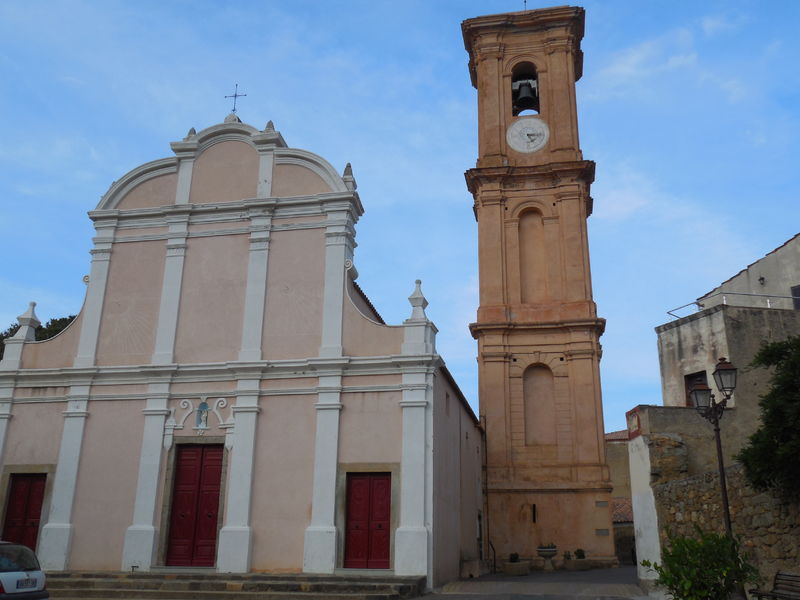
There is evidence that this church existed in the 17th century under the name of Santa Croce.In 1730 she was named Sant'Antonio Abbato. The organ gallery dates from 1888. The preaching pulpit, dated 1714, is in waxed wood; it was listed in 1995. Inside, several chapels and their altars were founded by the community or families whose coat of arms can be found.
The San Quilicu Chapel is the former Chapel of Souls in Purgatory. It was redecorated in 1810 after the upper window was obstructed during the erection of the campanile.
The baptistery chapel houses an 18th century canvas, a reproduction of a work by Carlo Maretta preserved in Rome, representing the martyrdom of St Francis Xavier. This painting, the author of which is unknown, was filed in 1995.


This chapel was founded around the 10th century and left to abandon in the 13th century. It was dedicated to San Quilicu, who is honoured and carried in procession in mid July.The building is built in two-tone polychrome granite (beige granitoïde and black syeno-diorite) without plaster, in the Romanesque tradition. It is located on the first built site of the village, traces of which remain in the surrounding land. It is now in ruins.


The parish church, A Nunziata, was built in the early 17th century. It features an elegant multi-level bell tower.The parish church A Nunziata contains old paintings and an organ dating from 1744 signed "Battista Pompost di Pistoia".
Its bell tower is made up of two floors. The bell was recast and baptized on April 4, 1982 Madre Di Le Gratiae "mother of all graces" by Father Pol de Léon of the convent of Marcasso.
The parish church adjoins the Chapel of the Confrérie Saint Antoine, a building built between 1760 and 1770. It is decorated with a niche in which is a statue of the Immaculate Conception Virgin.
It has a high altar from 1776 with plasterwork and visibly Baroque decor.


The convent's first stone was laid on 5 September 1623, on land generously donated by Cateri's three inhabitants. An official ceremony was held to mark the occasion. The building overlooks the entire Aregno plain.Its location had been chosen two years earlier, on May 6, 1621, and materialized by a cross placed on the ruins of a former commandery.
In all, it took two centuries and constant work to complete this imposing building of over 1500 m².
It consists of around 40 rooms, a cloister and a church; the latter was at that time the parish church of Cateri.
In 1642, the population of the convent was very important and many cultures were developed in its dependencies; consequently, the water requirements have, in fact, increased.
This is the reason why the neighboring municipality, Lavatoggio, was asked to donate water.
The municipality donated water from the "Capu di Guestia è Monacu Mortu" to the convent. 9 years later, another donation of water from Quarciolu and Parnicale was made; however, this water was only available from mid July to the end of October.
In 1789, the convent of Marcassu was declared National Property and sold at auction to Joseph Salvini de Nessa after the expulsion of the Franciscan friars who occupied it.
In 1806, Joseph Salvini sold the 2 large bells (bought by the factory of Sant Antonio) and the organs. He also ceded the polychrome marble high altar which now adorns the Church of Cateri.

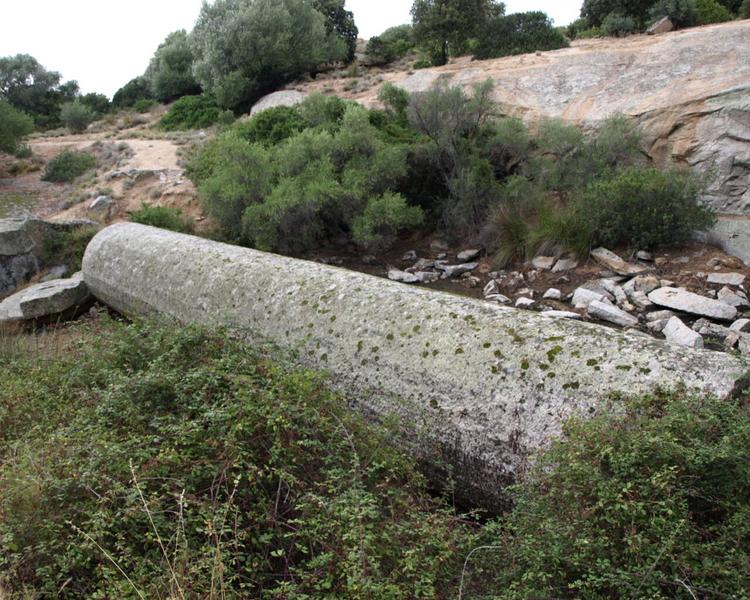
The Corbara Monolith is an impressive granite column, 17 m long and 3 m in diameter, carved in 1839 to support a statue of Napoleon I. It has been abandoned for logistical reasons. Abandoned for logistical reasons, it weighs 272 tons and bears witness to local history.A few kilometers from Algajola, off the RT30 and in the commune of Corbara, lies a little-known but impressive monument: the Corbara Monolith.
This granite block, 17.36 metres long and 2.74 metres in diameter, weighing almost 272 tonnes, is an imposing testimony to imperial ambition in the 19th century. Conceived in 1839 to serve as the base for a monumental statue of Napoleon destined for Ajaccio, the monolith never left the site where it was carved.
The quarry where this stone giant was born is located in an area where granite is characterized by its large, slightly faulted domes. Algajola granite is remarkable for its large honey-yellow crystals, micas with varied greenish inclusions, and its envelope of feldspars and quartz. Quarrymen cut this monolith directly on site, but the technical and financial difficulties of transporting it condemned this ambitious project to abandonment.
Today, the monolith rests peacefully in a private field, close to the ruins of the former quarrymen's cottages.

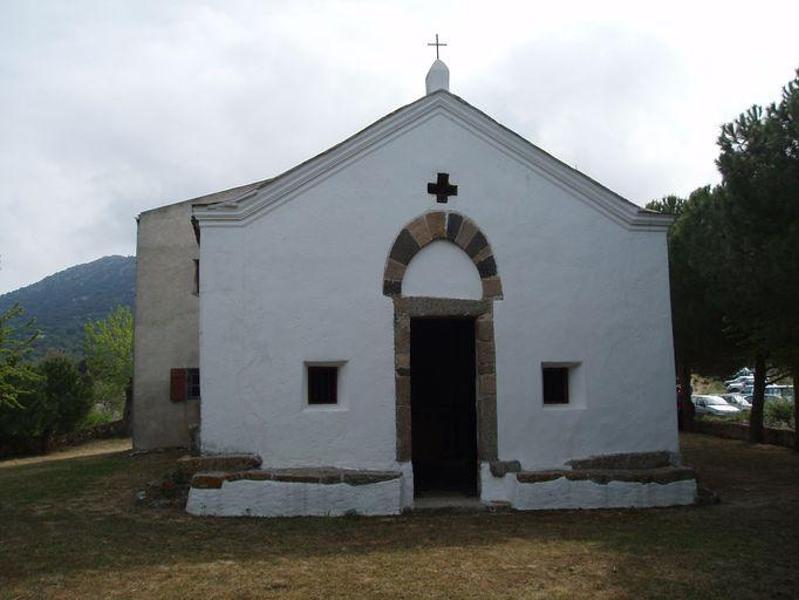
Located on the road from Ile-Rousse towards the village of Corbara, this Romanesque chapel was built in 1098 on the ruins of a Phoenician temple dedicated to the god Baal.The chapel was remodeled in the first half of the 18th century and restored in the 20th century.
This elongated edifice comprises a single nave and a choir covered with an exposed wooden frame and featuring religious symbols.
Two celebrations take place here: the first, on Easter Monday, with a procession and the blessing of eggs.
The second takes place on September 16, the feast day of Saint-Cyprien and Saint-Corneille, at which mass is held to enthrone the Prior and new members of the Confrérie de pénit.




